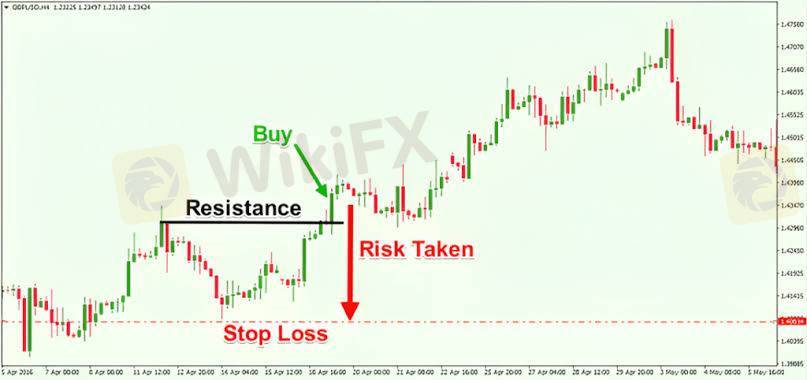2024-09-23 04:18
业内what effects stop loss?
Market conditions and volatility play a significant role in determining the effectiveness of stop loss orders. Here are a few key points to consider:
1. Volatility and Stop Loss Placement: In highly volatile markets, price fluctuations can be more substantial, increasing the likelihood of stop loss orders being triggered. Traders may need to adjust their stop loss levels accordingly to account for increased volatility and prevent premature stop-outs.
2. Liquidity and Slippage: During periods of high volatility or low liquidity, such as news announcements or market opening hours, slippage can occur. Slippage is when the execution price of an order differs from the expected price. This can impact the effectiveness of stop loss orders, as the actual execution price may be worse than the stop loss level set by the trader.
3. Whipsaw Price Movements: In choppy or erratic market conditions, stop loss orders may be more prone to whipsaw price movements. Whipsaws are rapid and unpredictable price reversals that can trigger stop loss orders before the market resumes its original direction. Traders may consider adjusting their stop loss levels to account for potential whipsaws and avoid premature exits.
4. Order Execution and Market Depth: The effectiveness of stop loss orders can also be influenced by order execution and market depth. During times of high volatility, order execution may be delayed, and there may be a lack of liquidity in the market. This can impact the ability to execute stop loss orders at the desired price, potentially resulting in slippage or inability to exit a trade at the intended level.
5. Adaptability and Monitoring: Traders should continuously monitor market conditions and adjust their stop loss levels accordingly. This includes considering the average true range (ATR), recent price action, support and resistance levels, and other relevant technical indicators. By adapting stop loss placement based on the current market conditions, traders can enhance the effectiveness of their risk management strategies.
In summary, market conditions and volatility significantly impact the effectiveness of stop loss orders. Traders should consider the specific market environment, adjust stop loss levels accordingly, account for potential slippage and whipsaws, and continuously monitor and adapt their risk management strategies to optimize trade outcomes
Like 0

周少强
交易者
Hot content
业内
Event-A comment a day,Keep rewards worthy up to$27
业内
Nigeria Event Giveaway-Win₦5000 Mobilephone Credit
业内
Nigeria Event Giveaway-Win ₦2500 MobilePhoneCredit
业内
South Africa Event-Come&Win 240ZAR Phone Credit
业内
Nigeria Event-Discuss Forex&Win2500NGN PhoneCredit
业内
[Nigeria Event]Discuss&win 2500 Naira Phone Credit
Forum category

平台

展会

IB

招聘

EA

业内

行情

指标
what effects stop loss?
 | 2024-09-23 04:18
| 2024-09-23 04:18Market conditions and volatility play a significant role in determining the effectiveness of stop loss orders. Here are a few key points to consider:
1. Volatility and Stop Loss Placement: In highly volatile markets, price fluctuations can be more substantial, increasing the likelihood of stop loss orders being triggered. Traders may need to adjust their stop loss levels accordingly to account for increased volatility and prevent premature stop-outs.
2. Liquidity and Slippage: During periods of high volatility or low liquidity, such as news announcements or market opening hours, slippage can occur. Slippage is when the execution price of an order differs from the expected price. This can impact the effectiveness of stop loss orders, as the actual execution price may be worse than the stop loss level set by the trader.
3. Whipsaw Price Movements: In choppy or erratic market conditions, stop loss orders may be more prone to whipsaw price movements. Whipsaws are rapid and unpredictable price reversals that can trigger stop loss orders before the market resumes its original direction. Traders may consider adjusting their stop loss levels to account for potential whipsaws and avoid premature exits.
4. Order Execution and Market Depth: The effectiveness of stop loss orders can also be influenced by order execution and market depth. During times of high volatility, order execution may be delayed, and there may be a lack of liquidity in the market. This can impact the ability to execute stop loss orders at the desired price, potentially resulting in slippage or inability to exit a trade at the intended level.
5. Adaptability and Monitoring: Traders should continuously monitor market conditions and adjust their stop loss levels accordingly. This includes considering the average true range (ATR), recent price action, support and resistance levels, and other relevant technical indicators. By adapting stop loss placement based on the current market conditions, traders can enhance the effectiveness of their risk management strategies.
In summary, market conditions and volatility significantly impact the effectiveness of stop loss orders. Traders should consider the specific market environment, adjust stop loss levels accordingly, account for potential slippage and whipsaws, and continuously monitor and adapt their risk management strategies to optimize trade outcomes
Like 0
I want to comment, too
Submit
0Comments

There is no comment yet. Make the first one.

Submit
There is no comment yet. Make the first one.